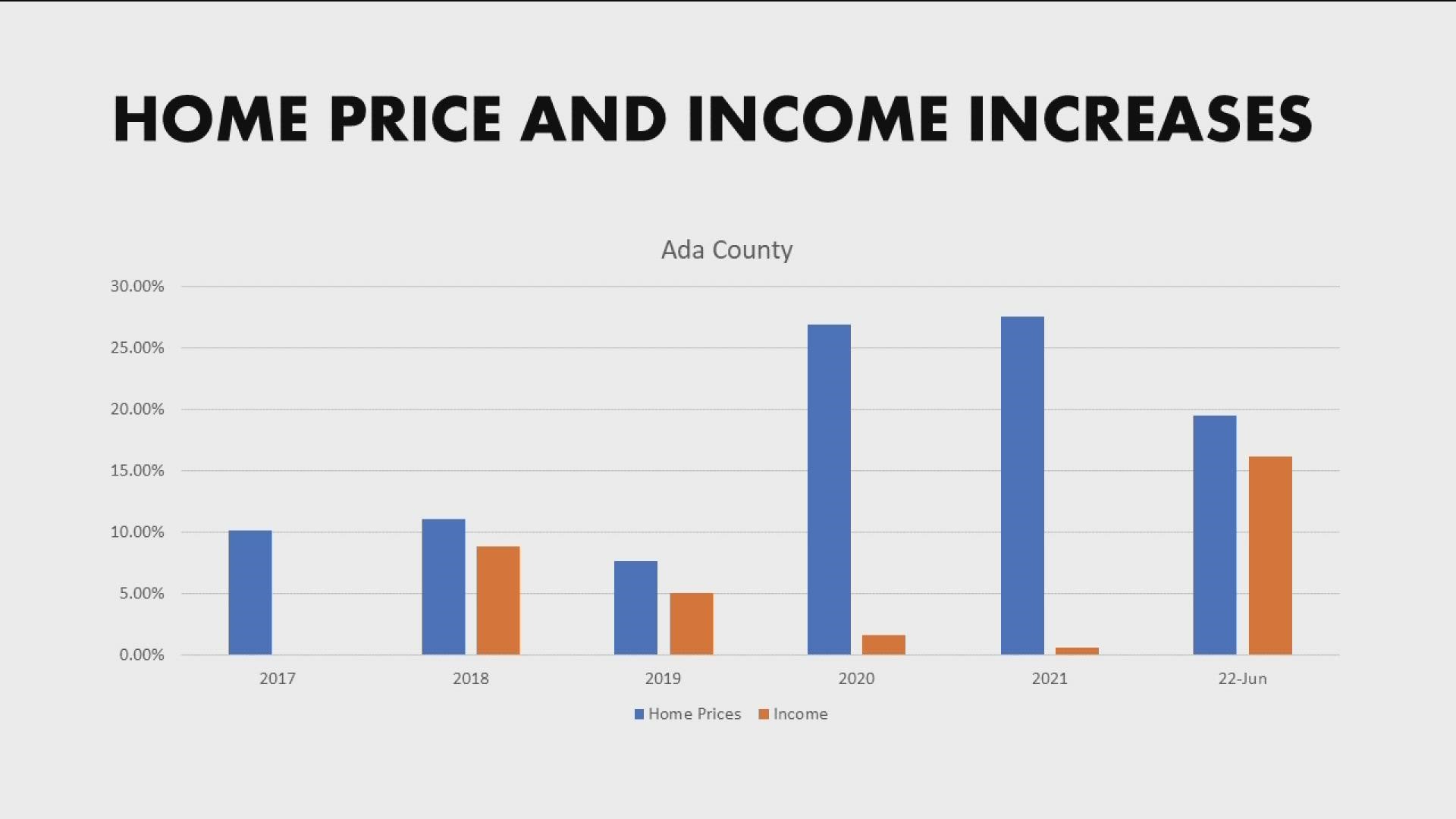IDAHO, USA — This story is part of a new weekly piece, Growing Idaho, where we'll look at how our area is growing and how that growth is affecting you.
We're kicking things off with a couple big questions. Are we in a housing bubble, and is that bubble ready to burst, which would tank the whole economy again?
77% of Americans think so according to a recent survey by the brokerage, Redfin. We've all talked to a lot of folks here in Idaho who believe this, too. But one expert said, while some of the red flags are there, some others are not.
Susan Semba is the Executive Vice President of the Idaho Housing and Finance Association. Before we talked about a possible housing bubble, we needed to talk about what it looked like here before the last bubble burst in the early 2000s.
"Boise wasn't as popular as it is now and affordability was very high," said Semba.
So high, that busloads of investors would drive through new Idaho neighborhoods and pick out homes like candy on a shelf, according to Semba. "I mean, it wasn't unusual for title companies to close deals with five or six homes in them and even higher, and that was unprecedented."
Home prices started to spike, but that was okay, we thought, because the booming housing market meant much of the economy was booming, too.
"We were happy, you know, it was bringing a lot of businesses and a lot of construction workers in and, and things are going really well," she said.
Semba added that many lenders wanted to keep the momentum going by offering no income, no asset loans with minimal documentation, with things like adjustable rates, where the payments would go up. The idea was if the loan payment get too much for you to handle, you could always sell your home for a profit... as long as it maintained its value, which it didn't.
"People began to default on their mortgages because they couldn't afford the payment," Semba said.
The bubble burst. Bottom line, everything stopped. Building stopped, leaving half-finished neighborhoods vacant. Builders left the state, so their hiring stopped. People were afraid to buy, so home sales stopped, and home values plummeted.
"So they couldn't afford the payment, the value was going down, they just gave up," she said.
As you all know, we rebounded eventually. But now, lots of folks are worried about all that happening again.
So, let's look back at 2008 through today's lens.
Back then, home prices spiked for years, but then started to drop. That is happening right now. Home values soared, and then also started to drop. That is also happening right now. Homebuilding was cruising along at a rapid pace, just like now.
But here's a big difference, home loans are not nearly as easy to get as they were in 2008. They are less affordable, especially with rising interest rates. Also, loans require a lot more documentation to prove how much you're earning, according to Semba.
"So the mortgage industry, we have to step in and say listen, this is not right, you know, all of these loan programs need to go away. And we need to have sustainable lending and, and we really fixed it ourselves," she said.
And another big difference, there are plenty of jobs out there. Right now, Idaho unemployment stands at less than 3%.
"That's what happened back in 2008-2009, is that there weren't any jobs to offer. And so people that did lose their job, they couldn't find another one." That's why Semba and many experts like her, say we are not heading into another housing bubble bursting.
"What drives it, are jobs. If we have jobs that people can work, it's sustainable," Semba said.
Semba also made the point that while there are jobs available, the pay at those jobs has not kept up with home prices. Since 2017, Ada County's median home prices have gone up anywhere between 7% and 27% a year. The previous two years have been spurred on by the pandemic housing surge.
The area median income limits to qualify for federal programs in that same period tell a very different story. Bottom line, those give you a good idea what established households are making across Idaho. That’s only grown anywhere between 0 and 16%.
So where does this leave first-time homebuyers? How can they break into this market? Many talked about waiting it out, but now interest rates are hovering around a 20-year high at and could continue rising. Semba said, homebuyer education is key. That means understanding your credit, what loans you can get, and even talking to a housing counselor.
Watch more 'Growing Idaho':
See the latest growth and development news in our YouTube playlist:

